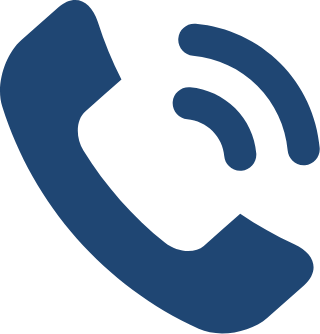How to Keep Your Healthcare Facility Powered Up During an Outage
Posted by Kristopher Schwind

Ten seconds—that’s the amount of time that power must be restored to life safety systems in the event of a power outage, per NFPA 110.
If you’re in the healthcare industry, we don’t have to tell you the immense difference that 10 seconds can make when it comes to life and death situations—you face hundreds, if not thousands, of them every day.
When it comes to saving human lives, every second counts, leaving no time for power failure.
In addition to jeopardizing human life, power outages can also threaten healthcare systems’ financial wellness. For many hospitals, an outage of even a minute can cause cost millions of dollars—a hit that many healthcare facilities can’t afford to take.
Because there’s so much more at stake in the healthcare industry, hospitals and other healthcare facilities are required to have an emergency backup power system in place—for both safety and legal reasons.
Let’s take a look at the importance of emergency backup power for the healthcare industry, including a few scary real-life scenarios of healthcare facilities that experienced devastating outages.
Healthcare Facility Emergency Backup Power Requirements
Having an emergency power system in place is essential—and required—to keep a healthcare facility running when there is no power.
To better understand the importance of backup power systems and generators to the healthcare system, as well as the different requirements, it can first help to know the differences between emergency power systems and standby power systems.
Here’s a simple breakdown:
| Emergency Power Systems | Standby Power Systems |
| Always required by law | Sometimes required by law, depending on local building codes (check with your town/city) |
| Provide backup power for systems that can pose safety hazards to humans if interrupted. | Produce backup power for systems that can potentially cause discomfort or disruption to business/production |
Must comply with NFPA standards:
|
Must comply with NFPA standards:
|
Virtually all hospitals and healthcare systems have internal systems that require uninterrupted power to avoid harm to patients or employees—or worse, loss of human life. Because of this, it’s required by law that all healthcare facilities have an emergency power system, as well as an emergency generator.
The legal requirements of backup power systems and generators powering healthcare facilities, however, don’t stop there.
For New York City, specifically, a standby generator is mandatory for buildings that meet the following criteria, among others:
- Are high-rise and/or have underground spaces
- Have horizontal sliding doors
- Store hazardous materials
- House organic peroxides
- Have elevators that are part of a facilities’ exit or egress system
Again, which requirements and laws apply to your healthcare facility will depend on your location, as well as the features of your building.
Be sure to do your due diligence to ensure you’re in compliance with local, state and/or national regulations and recommendations. That way you’ll be ready for an outage—or a formal inspection—any time.
Backup Power System and Generator Compliance Standards for Healthcare Facilities
To ensure your backup power system is firing on all cylinders and primed to perform in the midst of a power outage, it must meet certain standards, or codes—especially if you’re in the healthcare industry.
There are a number of NFPA standards (including 110 and 111) and other relative codes for emergency and standby power systems that hospitals and other healthcare facilities will need to ensure compliance with, including:
- NFPA 110: Standard for Emergency and Standby Power Systems—This code outlines the requirements for the installation, testing and maintenance of generators in emergency situations in which a power outage would pose a risk to the health- and life-safety of human beings.
Specific requirements will depend on a facility’s classification, type and level. Most—if not all—hospitals and healthcare facilities will fall under Level 1, for example, because power failure could result in serious injuries or loss of human life.
- NFPA 111: Standard on Stored Electrical Energy Emergency and Standby Power Systems—This code sets forth performance requirements for stored electrical energy systems providing a backup source of electrical power in buildings and facilities, should the original electrical power source fails.
- NFPA 101: Life Safety Code—This particular standard covers the requirements for “illumination of means of egress” and “exit signs and emergency lighting” as part of the life safety branch requirements outlined in NFPA 99 and the National Electric Code (NEC). In addition, NFPA 101 establishes certain provisions—including those of standby power systems—that must be met for high-rise buildings specifically.
- NFPA 70: National Electrical Code—You can find all electrical requirements associated with healthcare facilities under NFPA 70 Article 517. This reinforces what’s covered in NFPA 99 by explaining system installation requirements necessary for achieving targeted performance level.
- NFPA 99: The Health Care Facilities Code—To ensure the safety of all patients and healthcare staff, this standard sets the minimum criteria for the installation, performance and operation of healthcare-specific systems and equipment.
Requirements vary based on which risk category a facility falls under. However, most healthcare facilities are in Category 1—which, like with NFPA 110 Level 1, means life and safety are at risk if systems fail from a power outage.
In addition to local and national fire and electrical codes, many healthcare-accrediting organizations, such as The Joint Commission, have their own additional requirements.
If you are seeking accreditation or currently accredited by organizations like The Joint Commission, check with them to learn what their recommendations or requirements are to achieve compliance and, thus, accreditation.
Potential Negative Consequences of Power Outages to Healthcare Facilities
Though many hospitals and healthcare systems think a brown-out—or worse, a blackout—won’t affect them, no home or business is immune to either—including hospitals.
There’s a reason why the NFPA codes exist: to prevent power failures and to protect the health and safety of all. When these codes aren’t met, businesses run the risk of not only failing formal inspections, but also putting their facility—and their patients—at risk, should an outage occur.
Here are some real-life outcomes of healthcare facility power failures.
Florida nursing home affected by Hurricane Irma
In September 2017, Hurricane Irma—the fifth most costly Atlantic hurricane—devastated much of Florida, causing widespread power outages and destruction. The Rehabilitation Center at Hollywood Hills, a Florida nursing home, was one of many facilities affected by power outages.
Though the nursing home had a generator, it was not capable of keeping residents cool throughout the duration of the outage, and consequently, 12 residents died from overheating. Fortunately, in March 2018, Florida Governor Rick Scott passed a law requiring nursing homes and assisted living facilities to have backup power system that meet higher standards, as well as to comply with stricter emergency rules.
Two New-York hospitals without power from Superstorm Sandy
When Superstorm Sandy hit coastal New Jersey and New York in late October 2012, New York University Langone Medical Center and Bellevue Hospital, two Manhattan hospitals, not only lost power, but their emergency power systems failed. Because of that, nearly 1,000 patients had to be evacuated to other facilities.
Hurricane Michael closes multiple healthcare facilities
In the wake of Hurricane Michael just a few months ago, four Florida hospitals and 11 nursing facilities were shut down due to destruction and power outages.
Make no mistake—power outages can occur for a number of reasons, not just hurricanes and inclement weather.
That’s why it’s vital for healthcare systems especially to not only have a solid emergency power system in place, but fully functional and capable emergency standby generators that are compliant with local, state, and national codes.
Our team is readily available to provide a free on-site assessment to determine what standby generator will work best for your facility to ensure your patients and employees not only stay safe, but also comfortable, in the event of an outage.
Kristopher Schwind is the proud owner of National Standby Repair.
 24/7 EMERGENCY GENERATOR SERVICE
24/7 EMERGENCY GENERATOR SERVICE REQUEST A QUOTE
REQUEST A QUOTE
 (914) 734-1400
(914) 734-1400